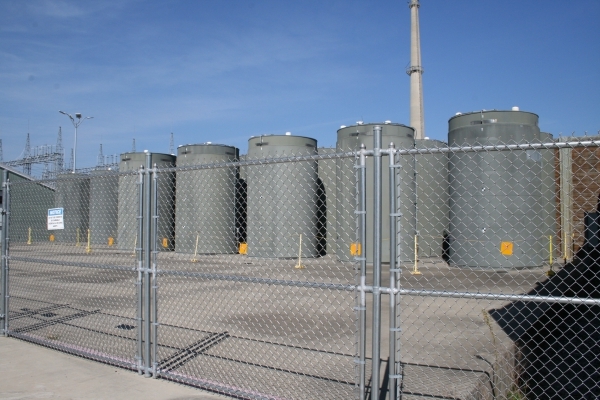PUTNEY — Recently, I attended a “high-level nuclear waste summit” in Chicago. The purpose of this gathering was to lay out the various possible options for keeping the most toxic waste in the world isolated from humans and other species for up to a million years.
The conference was comprised of people who feel strongly that creation of this waste is immoral and needs to stop - the sooner the better.
Those of us living in Windham County are a short distance from a toxic-waste dump. For the foreseeable future, the Vernon site of the shuttered Vermont Yankee reactor will be host to years' worth of highly radioactive fuel rods in a spent-fuel pool and in dry casks (the long-term storage method developed by the industry).
As the pool is emptied over the next couple of years, dry casks will be sitting out in the open on the banks of the Connecticut River in Vernon. Nobody knows for certain the fate of this waste, but there is a good chance that NorthStar, the company that wants to purchase the site from Entergy for decommissioning, will be thinking about moving this waste to the desert in Texas.
* * *
The options for storage of this waste essentially break down into four possibilities, none without large problems:
1. Long-term storage in dry casks on site. This is a problem because Entergy has chosen Holtec casks to contain the waste. These casks are not the robust, thick metal designs used in Europe and Japan; rather, they are thin-walled with concrete around the metal, they are known to be prone to cracking, and they are not able to be monitored remotely.
At present, there is no method to fix a compromised cask. Dry-cask storage is also a potential problem at sites along bodies of water where more violent and unpredictable storms might cause flooding, erosion, and sea-level rise.
2. The casks could be left on site, but stored in a building, behind earthen berms, or buried to make the waste a less-attractive target should anyone ever want to do our area harm. Ideally, we would also have stronger casks that would more easily be monitored for cracks, but that ship has sailed.
3. A scientifically chosen, permanent, deep burial site, one that is seismically stable, dry, and in an area where residents are compensated for the burden of hosting thousands of dangerous shipments, and where citizens have some say in the decision. For many reasons, Yucca Mountain in Nevada does not qualify here: it does not meet the scientific criteria, it is on Western Shoshone land, and the state strongly opposes this selection.
4. NorthStar chooses an option called “consolidated interim storage.” This means taking waste not only from Vermont Yankee, but also from reactor sites all over the country, mainly in the East and Midwest, shipping them on our poorly maintained train lines, through many of our largest cities (that's where the tracks go) to west Texas.
There, Waste Control Specialists, a company with the same corporate ownership as NorthStar, plans to keep these casks baking in the desert sun on concrete slabs.
This is not really a temporary move, even though NorthStar's CEO claims it is just a stop on the way to Yucca Mountain. With this and its other nuclear concerns, this area of west Texas, near the New Mexico border, is fast becoming the nuclear industry's sacrifice zone, especially if it becomes the site of all the high-level waste.
* * *
These are the options. Nobody is shooting this stuff into outer space. (Imagine an explosion!) It will not become safe within the lifetimes of the grandchildren of anyone alive on Earth.
So, those of us in Chicago met with people living in the area of Texas and New Mexico who strongly oppose this move. These people are largely Hispanic, and they have not been consulted about this storage and the dangers involved, just as nobody is asking those of us in Vermont what we feel would be the least dangerous option for Vermont Yankee's waste.
There people are very concerned that the interim storage makes possible the dream of the nuclear weapons industry: reprocessing of the spent fuel to isolate the plutonium (the most deadly element in a deadly mix) for nuclear bombs, leaving a toxic soup that has been a challenging, multi-billion-dollar, unfinished clean-up project at West Valley in New York for half a century. This must not happen.
Those present in Chicago were all people who have spent years, decades in some cases, working to keep us safe from the perils of the nuclear industry.
We were able to block the “nuclear renaissance,” a new generation of reactors being proposed in this century, but we have a huge project in isolating the waste from the folly of the first nuclear power buildout during the 20th century.
The dangers of this industry are clear every day as we see the meltdowns at Fukushima continuing to escalate toward an unsolved crisis.
My fervent hope is that we can successfully isolate this waste and prevent a terrible crisis should an accident occur in shipping, should these casks prove to be even less robust than we fear, or should we experience another unforeseen problem.
We all should be paying attention, as we want to hand our descendants a livable, beautiful world.
